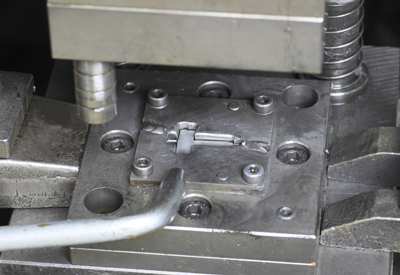Energy Efficiency Opportunities for Aluminum Metal Casters
With today’s energy prices, impressive energy savings do not always require major capital investments in new equipment Melting is the most energy-intensive operation in metal casting facilities, accounting for about 55% of the total energy use in foundries. .
Inefficiencies in melting may be found in stack losses, inaccuracies in temperature measurement, conduction and radiation losses, poorly-fitting charge well covers and doors, temperature imbalance when adding cold metal to the charge and improper handling procedures. Compressed air systems is a related area that may hold additional efficiency improvement opportunities.
Process Heating
Aluminum melting and molten metal holding technologies comprise a large portion of energy consumption in the aluminum metals industry. Fuel-fired melting system opportunities from MnTAP’s experience include:
- Insulation integrity and maintenance
- Proper metal furnace charging and fluxing procedures
- Process flow optimization
- Ladle preheating
- Burner tuning
- Furnace and ladle covers
- Waste heat recovery technologies like recuperative and regenerative heat exchangers or combined heat and power applications
When considering new furnaces or ovens, it is important to note that there are a number of types of melting furnaces on the market and each have differing degrees of efficiency that can affect the degree of metal loss and thermal efficiencies.
| Furnace Type | Gas | Electric | Melt Loss | Thermal Efficiency | Thermal Efficiency Rating |
|---|---|---|---|---|---|
| Crucible (gas) | X | 4 – 6% | 7 – 19% | POOR | |
| Reverberatory | X | 3 – 7% | 30 – 45% | FAIR to GOOD | |
| Rotary | X | 35% | FAIR | ||
| Stack melter | X | 1 – 2% | 40 – 45% | GOOD | |
| Induction | X | 0.75 (aluminum) – 3% | 50 -76% | GOOD to EXCELLENT | |
| Reverberatory | X | 1 – 3% | 59 – 76% | EXCELLENT |
Electric melting has some overall advantages in thermal efficiencies and in lower metal melt loss. Combustion inefficiencies, exhaust waste heat loss, and combustion and oxidation contaminants in the form of dross and slag metal melt loss can contribute to fuel-fired furnace lesser efficiencies. Nonetheless, fuel-fired furnace equipment operations can effectively employ a variety of procedures and methodologies that can lead to some significant energy savings estimates.
Resources
- DOE Report: Industrial Technologies Program Advanced Melting Technologies: Energy Saving Concepts and Opportunities for the Metal Casting Industry (2005) [PDF 1.8MB]. The study examines current and emerging melting technologies and discusses their technical barriers to scale-up issues and research needed to advance these technologies, improving melting efficiency, lowering metal transfer heat loss, and reducing scrap.
- DOE Fact Sheet: Efficient Process Heating in the Aluminum Industry [PDF 285KB]. Aluminum producers can cut process heating energy use 10 to 30% by improving operations in five areas: heat generation, heat transfer, heat containment, waste heat recovery and enabling technologies.
- DOE Report: Energy Use in Selected Metal Casting Facilities – 2003 [PDF 729KB]. This report provides an energy benchmark for various metal casting processes, including aluminum. It describes process flows and energy use by fuel type and processes for selected casting operations. It also provides recommendations for improving energy efficiency in casting.
- DOE Web site: Process Heating Systems These webpage provices tools, tips, case studies, and training opportunities and others technical advice to improve process heating systems.
